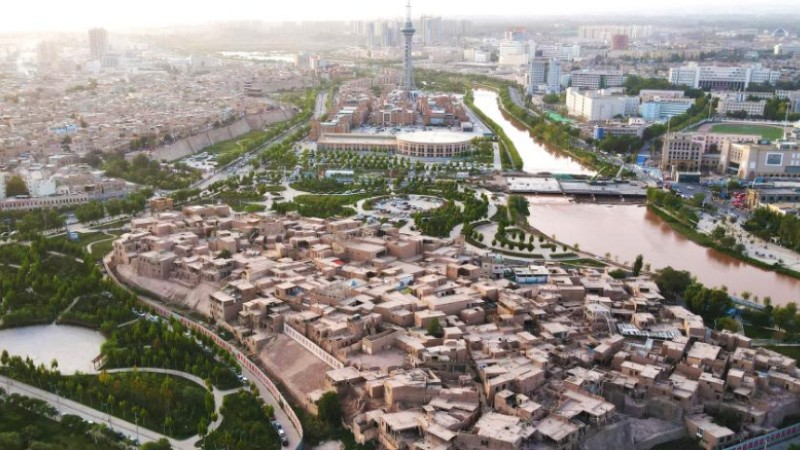Tibet Story: Hillside village's eco-friendly garbage recycling cause
LHASA, Sept. 11 (Xinhua) -- By Lake Ra'og Co in southwest China's Tibet Autonomous Region, sits Aru Village, where almost all the local youngsters had to raft across the lake to reach the nearest township decades ago while bringing a wooden stick to pick up the floating garbage on the way.
The civil-minded villagers' eco-friendly practice has turned into a cause supported by government funds, also proven to be lucrative due to the booming local ecotourism development.
A total of 227 people from 43 households now live in the village in Qamdo City, Tibet. The local government hires 44 locals to take turns to clean up garbage by the lake and the surrounding forests on the hills.
These ecosystem "guardians" are also in charge of patrolling and maintaining the roads and the sanitation work of the surrounding environment. After collection, the garbage will be sent to waste disposal factories for further recycling.
Meanwhile, a hired staff member can earn an annual income of 3,500 yuan (about 485 U.S. dollars) for their hard work, said Dampa, a 46-year-old villager.
About two decades ago, when Dampa was still in his twenties, he was conditioned to scoop up the flowing rubbish on the lake just like his peers. "There was mainly plastic waste dumped by the residents and tourists. The garbage was particularly noticeable against the beautiful lake," Dampa recalled.
To maintain the clean and picturesque scenery of the lake, the villagers started voluntary garbage picking of their own accord. In 2008, a bridge was built across the lake, putting an end to the rafting travel needs of the locals. However, the garbage collecting routine has survived.
Tsering Dondrup, 25, a village official, often went to school on Dampa's raft when he was a primary school student. The official remembers clearly the scenes of adults picking up garbage on the lake.
In 2021, when Tsering Dondrup became part of the village committee, he and other officials decided to protect the lake's ecosystem while applying for a scenic area recognition of the village.
A well-preserved ecological environment of the lake and surroundings is a must for the possibility of a burgeoning tourism sector, said Tsering Dondrup. Therefore, he and other colleagues started to promote environmental protection knowledge to the villagers to raise the public's awareness of protecting the ecosystem.
To slow down the melting of glaciers surrounding Aru Township near Aru Village, the local government of the township has also built fences along the glaciers, with nearly 270,000 yuan of investment.
In 2021, Aru Village was listed among the region's demonstration villages of ecological civilization construction, winning fame as "the most beautiful village by Lake Ra'og Co."
The lake, the largest in the east of Tibet, now receives 300,000 visitors annually, becoming a popular tourist destination in the region, which helps the locals rake in a total of 30 million yuan every year.
"Without the villagers' efforts and the government support in recycling the garbage, there is no possibility that Ra'og Co can sustain its beauty as it is nowadays, and our village will never live up to its reputation of 'the most beautiful village' by the lake," said Xu Cong, a village official.
Photos
Related Stories
Copyright © 2023 People's Daily Online. All Rights Reserved.









